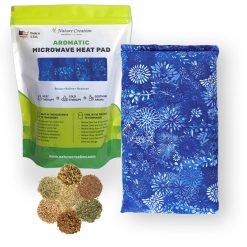Yoga, a practice that dates back thousands of years, combines physical postures, breath control, and meditation to promote overall well-being. One of the most celebrated benefits of yoga is its ability to enhance flexibility and strength. This article delves into the science behind how yoga achieves these benefits and the physiological mechanisms involved.
The Physiology of Flexibility
Flexibility refers to the range of motion available in a joint or group of joints. It is influenced by the muscles, tendons, ligaments, and other connective tissues surrounding the joints. Here are the key physiological components:
- Muscle Elasticity and Plasticity:
- Elasticity refers to the ability of a muscle to return to its original length after being stretched. This is similar to a rubber band.
- Plasticity is the capacity of a muscle to maintain a new length after being stretched for an extended period. Yoga promotes plastic changes in muscles, increasing long-term flexibility.
- Connective Tissue:
- Connective tissues, including tendons and ligaments, play a crucial role in flexibility. These tissues can be gradually lengthened through consistent stretching exercises, such as those found in yoga.
- Nervous System:
- The nervous system regulates muscle tension and relaxation. Yoga incorporates breathing and relaxation techniques that help reduce muscle tension and enhance flexibility by allowing the muscles to stretch more easily.
Yoga and Flexibility
Yoga incorporates a variety of poses (asanas) that target different muscle groups and joints. Here’s how yoga helps improve flexibility:
- Static Stretching:
- Many yoga poses involve holding a stretch for an extended period, which promotes muscle elongation and increases flexibility.
- Dynamic Stretching:
- Some yoga sequences include dynamic movements that gradually increase the range of motion, preparing the muscles and joints for deeper stretches.
- Proprioceptive Neuromuscular Facilitation (PNF):
- Yoga often involves engaging and relaxing muscles in a specific sequence, similar to PNF stretching techniques, which can lead to significant improvements in flexibility.
Enhance your flexibility with Nature Creation’s herbal heating pads
The Physiology of Strength
Strength in yoga is developed through both isotonic and isometric exercises:
- Isotonic Contractions:
- These involve movement where the muscle changes length (e.g., transitioning from Plank to Upward Dog). This type of contraction helps build muscle endurance and strength.
- Isometric Contractions:
- Many yoga poses require holding a position without moving, which strengthens muscles through sustained contraction (e.g., holding Warrior II). This improves muscle endurance and stability.
Yoga and Strength
Yoga improves strength through a variety of postures that engage multiple muscle groups:
- Weight-Bearing Poses:
- Poses like Downward Dog and Plank engage the upper body muscles, including the shoulders, arms, and core, building strength.
- Balancing Poses:
- Balancing poses such as Tree Pose or Warrior III require the activation of core and leg muscles to maintain stability, enhancing muscular strength and coordination.
- Repetitive Sequences:
- Flow sequences like Sun Salutations involve repeating movements that build muscular endurance and strength over time.
Additional Physiological Benefits
- Improved Circulation:
- Yoga enhances blood flow to the muscles, providing them with oxygen and nutrients necessary for growth and repair.
- Increased Synovial Fluid:
- Movement in yoga helps stimulate the production of synovial fluid, which lubricates the joints, reducing friction and improving mobility.
- Hormonal Balance:
- Yoga can influence hormone production, reducing stress hormones like cortisol, which can negatively impact muscle function and flexibility.
- Reduced Muscle Tension:
- The relaxation techniques in yoga help reduce overall muscle tension, making it easier to stretch and strengthen muscles.
Conclusion
The practice of yoga offers a comprehensive approach to improving flexibility and strength through a combination of stretching, strengthening, and relaxation techniques. By understanding the physiological mechanisms behind these benefits, practitioners can appreciate the profound impact yoga has on their physical health. Whether you’re looking to enhance your flexibility, build strength, or achieve a balanced state of well-being, yoga provides a scientifically-backed method to achieve these goals.







